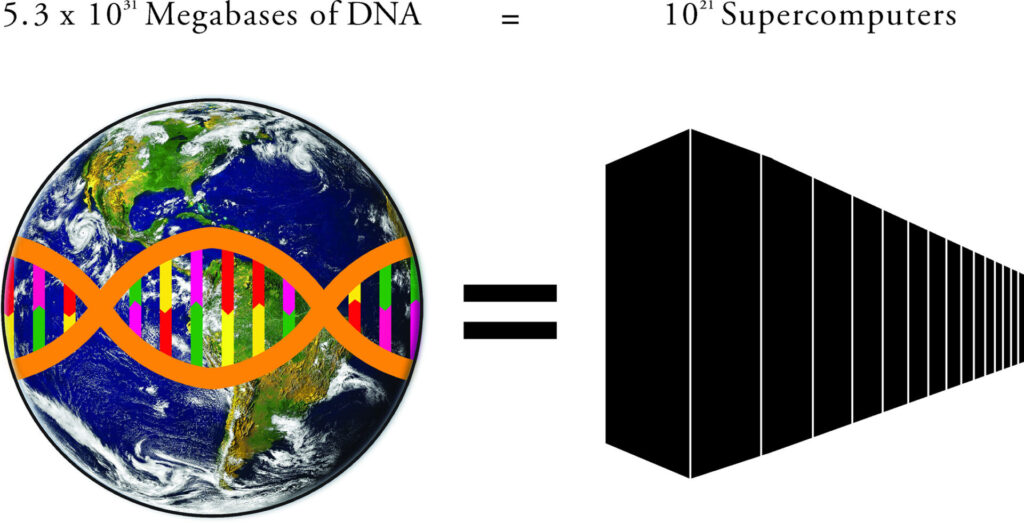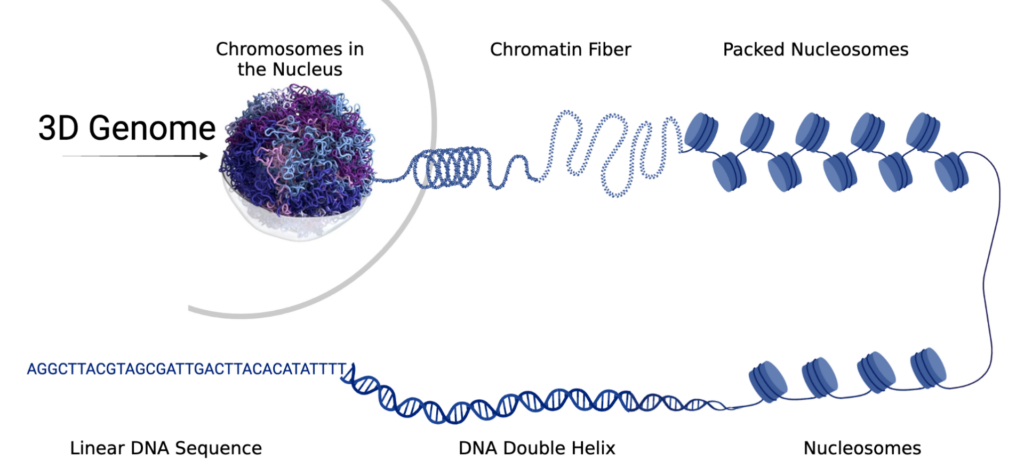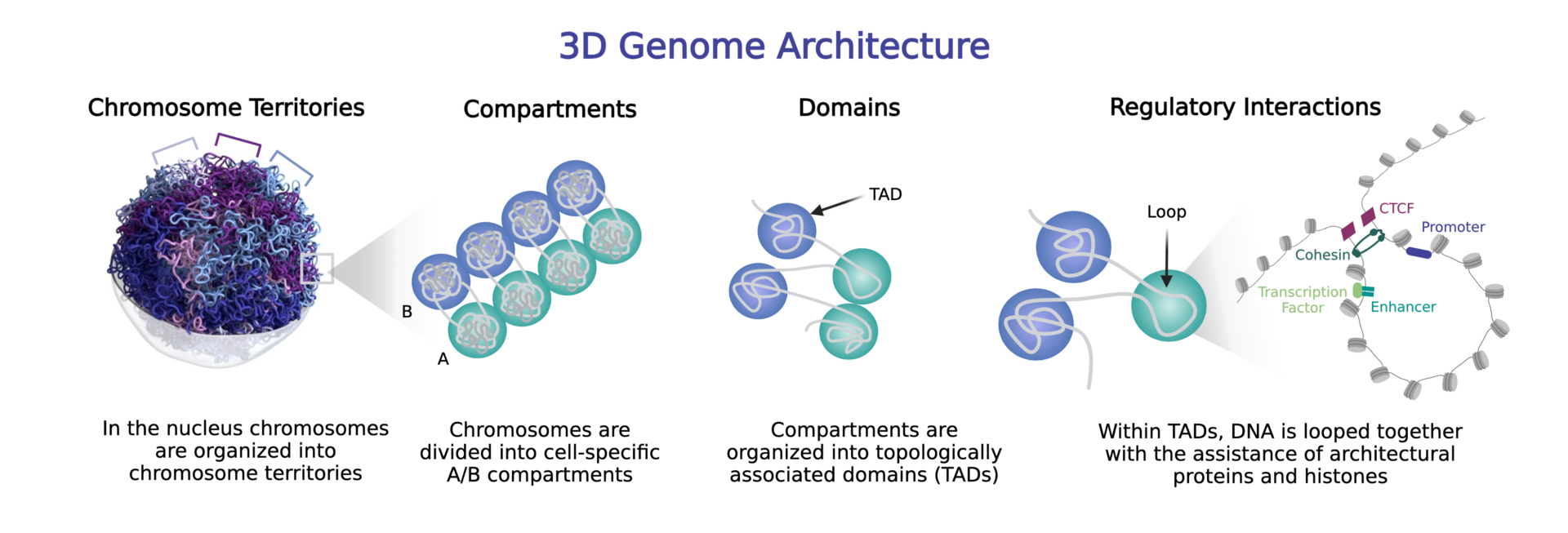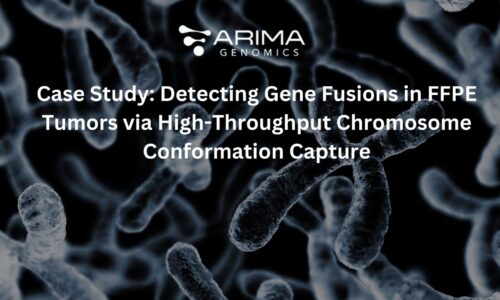April 25, 2023
Share
National DNA Day is a worldwide event that takes place annually to celebrate the momentous discovery of the double helix structure of DNA.

However, this year’s celebration on April 25, 2023, holds even greater significance as it commemorates both the 20th anniversary of the completion of the Human Genome Project and the 70th anniversary of the initial discovery of the DNA double helix, making it an extraordinary occasion that will be honored by people all around the globe.
As a company of scientists and science enthusiasts – we are on a mission to help scientists explore DNA in new ways to uncover novel biology. So let’s start with five fun facts about DNA and 3D Genomics.
#1. Its a DNA World
As scientists, we love to quantify things, even those things that seem almost immeasurable – such as how much DNA is on Earth? Luckily back in 2015, a group of researchers figured this out. First, they calculated the total biomass of life on Earth. Next, they quantified DNA content based on the estimated number of living individuals and their size in five significant subgroups of life: prokaryotes, plants, animals, unicellular eukaryotes, and fungi. Finally, they calculated the number of cells contained in each organism. Then, they multiplied that by the amount of DNA contained in each cell, giving them a value for the amount of DNA contained in a given organism.

The immense data storage requirements of all of the DNA in Earth’s biosphere.
As the team reported in PLOS Biology, they found that Earth contains around 50 trillion trillion trillion DNA base pairs (plus or minus 3.6 x 1037 base pairs). If gathered together, that amount of DNA would weigh 50 billion tons and fill one billion shipping containers.
To put this into a data storage context, storing all the DNA contained in the biosphere would require approximately 1021 supercomputers with the average storage capacity of the world’s four most powerful supercomputers.
#2. Big Genomes, Tiny Nuclei
The human genome is 3.2 Gb in length, and each diploid cell contains ~6.3 Gb of DNA. If you uncoiled all this DNA and laid it end to end, it would be about 2 meters long. But, DNA is not stored in a long line of ACGTs; instead, it is highly organized into the nucleus of cells, which in humans is 5-20mm in diameter; how the DNA is organized into the nucleus is critically important for coordination of gene expression and genome function. That is where 3D genomics comes in. Numerous levels of condensation and compaction must occur until whole chromosomes are organized in the nucleus to get all that DNA into the nucleus.

Numerous levels of compaction are needed to go from the double helix to how DNA is stored in the nucleus.
#3. 3D Genomics – Looking beyond just sequence
3D genomics involves exploring the 3-dimensional organization of DNA in the nucleus to reveal insights into the genome’s sequence, structure, and regulatory landscape. Although techniques to understand the 3D organization of chromosomes were first described in the rat prolactin gene by Cullen et al. (1993) and then in yeast by Dekker et al. (2002), the field of 3D genomics is relatively nascent. It is now known that there are multiple levels of chromatin organization in the nucleus of cells, including chromosomal territories, compartments, domains, and looping structures that coordinate regulatory interactions.

The 3D genome is organized at multiple levels into chromosome territories, compartments, domains including topologically associated domains (TADs), and looping structures.
Learn more about the power of 3D genomics.
#4. 3D Genomics – A whole new source of biological insight
The utility of 3D genome data is quite varied. But there are three main groupings of information it can provide. First, sequence: because the 3D genome is studied using next-generation sequencing, sequence information is retained and can be combined with chromatin conformation. Structure: the 3D structure of the Genome can be used to identify structural variants such as gene fusions as potential drivers of disease. Regulation: by looking at the organization of DNA in the nucleus, you can detect 3D interactions that yield powerful insights into mechanisms of gene regulation.

3D genomics provides access to the sequence, structure, and regulatory landscapes of genomes.
The applications of this technology are quite varied, from assembling chromosome-scale genomes, linking non-coding disease-associated risk variants to target genes, understanding the mechanisms of gene regulation in a wide variety of diseases, and detecting gene fusions in tumor samples that were missed by other technologies, to name a few.
Learn more about how 3D genomics can strengthen your multi-omics approach to scientific research.
#5 3D Cancer Genomics – Shedding light on gene fusions
Structural variants play an important role in cancer. A 2020 paper in Nature reported that more than 95% of cancers have one or more somatic structural variants. This makes the detection of structural variants essential for elucidating disease mechanisms, diagnosis, and patient stratification. Interestingly, chromosomal translocations in cancer occur more frequently between regions that are in close proximity in 3-dimensional space. This also means that using a 3D genomics approach, we can detect these structural variants that often result in gene fusions, whereas a linear genomics approach would miss them.
Unlike linear genomics, 3D genomics allows you to detect 3D linkages in 3-dimensional space. For example, in a cell with a gene fusion, this provides many informative sequences reads around the breakpoint, thereby enabling improved detection of gene fusion events.

Using 3D genomics enables the detection of gene fusions that may be missed using linear genomics.
Learn more about Revealing the Broader Impact of Gene Fusions in Cancer with 3D Genomics
We hope you enjoy our five fun facts about DNA and 3D genomics and will join us in celebrating how DNA unites us and holds the key to groundbreaking scientific discoveries that will improve human health and protect our ecosystems for generations to come.
Request a Quote
In honor of DNA Day, Arima Genomics is excited to offer an exclusive promotion for you and your lab crew.
Learn more



